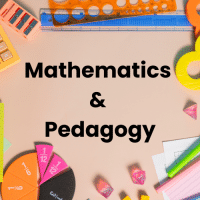CTET & State TET Exam > CTET & State TET Questions > Direction: Answer the following question by s...
Start Learning for Free
Direction: Answer the following question by selecting the correct/most appropriate option:
Statement A) India has a representative democracy.
Statement B) In India, people choose/elect their representatives through the process of elections.
Statement A) India has a representative democracy.
Statement B) In India, people choose/elect their representatives through the process of elections.
- a)Both A) and B) are true and B) is the correct explanation of A)
- b)Both A) and B) are true but B) is not the correct explanation of A)
- c)A) is true, but B) is false
- d)A) is false, but B) is true
Correct answer is option 'A'. Can you explain this answer?
| FREE This question is part of | Download PDF Attempt this Test |
Most Upvoted Answer
Direction: Answer the following question by selecting the correct/most...
Answer:
Explanation:
The correct answer is option 'A' - Both A) and B) are true and B) is the correct explanation of A).
Reasoning:
Statement A) India has a representative democracy.
Statement B) In India, people choose/elect their representatives through the process of elections.
Let's analyze both statements:
Statement A: India has a representative democracy.
In a representative democracy, the citizens elect their representatives who then make decisions and pass laws on their behalf. India follows a parliamentary system of government where the President is the head of state and the Prime Minister is the head of government. The citizens have the right to vote and elect their representatives at various levels of government, including the national, state, and local levels. These elected representatives form the legislative bodies and are responsible for making laws and policies.
Statement B: In India, people choose/elect their representatives through the process of elections.
Elections are an integral part of the democratic process in India. The citizens of India who are 18 years and above have the right to vote in free and fair elections. They have the power to choose their representatives through the voting process. Elections are conducted at regular intervals for the Lok Sabha (lower house of Parliament), Rajya Sabha (upper house of Parliament), state legislative assemblies, and local bodies. Political parties and candidates campaign and present their manifestos, and the citizens choose the candidates they believe will best represent their interests and concerns.
Explanation of the Correct Answer:
Both statements A and B are true, and statement B is the correct explanation of statement A. India indeed has a representative democracy where the citizens elect their representatives through the process of elections. The citizens exercise their right to vote and choose the candidates they believe will represent their interests and work towards their welfare. These elected representatives form the government and make decisions and laws on behalf of the people they represent.
Therefore, option 'A' is the correct answer as both statements are true, and statement B correctly explains statement A.
Explanation:
The correct answer is option 'A' - Both A) and B) are true and B) is the correct explanation of A).
Reasoning:
Statement A) India has a representative democracy.
Statement B) In India, people choose/elect their representatives through the process of elections.
Let's analyze both statements:
Statement A: India has a representative democracy.
In a representative democracy, the citizens elect their representatives who then make decisions and pass laws on their behalf. India follows a parliamentary system of government where the President is the head of state and the Prime Minister is the head of government. The citizens have the right to vote and elect their representatives at various levels of government, including the national, state, and local levels. These elected representatives form the legislative bodies and are responsible for making laws and policies.
Statement B: In India, people choose/elect their representatives through the process of elections.
Elections are an integral part of the democratic process in India. The citizens of India who are 18 years and above have the right to vote in free and fair elections. They have the power to choose their representatives through the voting process. Elections are conducted at regular intervals for the Lok Sabha (lower house of Parliament), Rajya Sabha (upper house of Parliament), state legislative assemblies, and local bodies. Political parties and candidates campaign and present their manifestos, and the citizens choose the candidates they believe will best represent their interests and concerns.
Explanation of the Correct Answer:
Both statements A and B are true, and statement B is the correct explanation of statement A. India indeed has a representative democracy where the citizens elect their representatives through the process of elections. The citizens exercise their right to vote and choose the candidates they believe will represent their interests and work towards their welfare. These elected representatives form the government and make decisions and laws on behalf of the people they represent.
Therefore, option 'A' is the correct answer as both statements are true, and statement B correctly explains statement A.
Free Test
FREE
| Start Free Test |
Community Answer
Direction: Answer the following question by selecting the correct/most...
- India is a democratic country.
- Democracies are often referred to as Representative Democracies.
- In a Representative Democracy, people do not participate directly in decision-making instead choose/elect their representatives through the process of elections.
- These chosen representatives in return make decisions for the entire country.
- A democratic government allows all the eligible individuals in the country to vote. This is known as Universal Adult Franchise.
Therefore, we can say that the correct answer is Both A) and B) are true and B) is the correct explanation of A).
Attention CTET & State TET Students!
To make sure you are not studying endlessly, EduRev has designed CTET & State TET study material, with Structured Courses, Videos, & Test Series. Plus get personalized analysis, doubt solving and improvement plans to achieve a great score in CTET & State TET.

|
Explore Courses for CTET & State TET exam
|

|
Similar CTET & State TET Doubts
Direction: Answer the following question by selecting the correct/most appropriate option:Statement A) India has a representative democracy.Statement B) In India, people choose/elect their representatives through the process of elections.a)Both A) and B) are true and B) is the correct explanation of A)b)Both A) and B) are true but B) is not the correct explanation of A)c)A) is true, but B) is falsed)A) is false, but B) is trueCorrect answer is option 'A'. Can you explain this answer?
Question Description
Direction: Answer the following question by selecting the correct/most appropriate option:Statement A) India has a representative democracy.Statement B) In India, people choose/elect their representatives through the process of elections.a)Both A) and B) are true and B) is the correct explanation of A)b)Both A) and B) are true but B) is not the correct explanation of A)c)A) is true, but B) is falsed)A) is false, but B) is trueCorrect answer is option 'A'. Can you explain this answer? for CTET & State TET 2024 is part of CTET & State TET preparation. The Question and answers have been prepared according to the CTET & State TET exam syllabus. Information about Direction: Answer the following question by selecting the correct/most appropriate option:Statement A) India has a representative democracy.Statement B) In India, people choose/elect their representatives through the process of elections.a)Both A) and B) are true and B) is the correct explanation of A)b)Both A) and B) are true but B) is not the correct explanation of A)c)A) is true, but B) is falsed)A) is false, but B) is trueCorrect answer is option 'A'. Can you explain this answer? covers all topics & solutions for CTET & State TET 2024 Exam. Find important definitions, questions, meanings, examples, exercises and tests below for Direction: Answer the following question by selecting the correct/most appropriate option:Statement A) India has a representative democracy.Statement B) In India, people choose/elect their representatives through the process of elections.a)Both A) and B) are true and B) is the correct explanation of A)b)Both A) and B) are true but B) is not the correct explanation of A)c)A) is true, but B) is falsed)A) is false, but B) is trueCorrect answer is option 'A'. Can you explain this answer?.
Direction: Answer the following question by selecting the correct/most appropriate option:Statement A) India has a representative democracy.Statement B) In India, people choose/elect their representatives through the process of elections.a)Both A) and B) are true and B) is the correct explanation of A)b)Both A) and B) are true but B) is not the correct explanation of A)c)A) is true, but B) is falsed)A) is false, but B) is trueCorrect answer is option 'A'. Can you explain this answer? for CTET & State TET 2024 is part of CTET & State TET preparation. The Question and answers have been prepared according to the CTET & State TET exam syllabus. Information about Direction: Answer the following question by selecting the correct/most appropriate option:Statement A) India has a representative democracy.Statement B) In India, people choose/elect their representatives through the process of elections.a)Both A) and B) are true and B) is the correct explanation of A)b)Both A) and B) are true but B) is not the correct explanation of A)c)A) is true, but B) is falsed)A) is false, but B) is trueCorrect answer is option 'A'. Can you explain this answer? covers all topics & solutions for CTET & State TET 2024 Exam. Find important definitions, questions, meanings, examples, exercises and tests below for Direction: Answer the following question by selecting the correct/most appropriate option:Statement A) India has a representative democracy.Statement B) In India, people choose/elect their representatives through the process of elections.a)Both A) and B) are true and B) is the correct explanation of A)b)Both A) and B) are true but B) is not the correct explanation of A)c)A) is true, but B) is falsed)A) is false, but B) is trueCorrect answer is option 'A'. Can you explain this answer?.
Solutions for Direction: Answer the following question by selecting the correct/most appropriate option:Statement A) India has a representative democracy.Statement B) In India, people choose/elect their representatives through the process of elections.a)Both A) and B) are true and B) is the correct explanation of A)b)Both A) and B) are true but B) is not the correct explanation of A)c)A) is true, but B) is falsed)A) is false, but B) is trueCorrect answer is option 'A'. Can you explain this answer? in English & in Hindi are available as part of our courses for CTET & State TET.
Download more important topics, notes, lectures and mock test series for CTET & State TET Exam by signing up for free.
Here you can find the meaning of Direction: Answer the following question by selecting the correct/most appropriate option:Statement A) India has a representative democracy.Statement B) In India, people choose/elect their representatives through the process of elections.a)Both A) and B) are true and B) is the correct explanation of A)b)Both A) and B) are true but B) is not the correct explanation of A)c)A) is true, but B) is falsed)A) is false, but B) is trueCorrect answer is option 'A'. Can you explain this answer? defined & explained in the simplest way possible. Besides giving the explanation of
Direction: Answer the following question by selecting the correct/most appropriate option:Statement A) India has a representative democracy.Statement B) In India, people choose/elect their representatives through the process of elections.a)Both A) and B) are true and B) is the correct explanation of A)b)Both A) and B) are true but B) is not the correct explanation of A)c)A) is true, but B) is falsed)A) is false, but B) is trueCorrect answer is option 'A'. Can you explain this answer?, a detailed solution for Direction: Answer the following question by selecting the correct/most appropriate option:Statement A) India has a representative democracy.Statement B) In India, people choose/elect their representatives through the process of elections.a)Both A) and B) are true and B) is the correct explanation of A)b)Both A) and B) are true but B) is not the correct explanation of A)c)A) is true, but B) is falsed)A) is false, but B) is trueCorrect answer is option 'A'. Can you explain this answer? has been provided alongside types of Direction: Answer the following question by selecting the correct/most appropriate option:Statement A) India has a representative democracy.Statement B) In India, people choose/elect their representatives through the process of elections.a)Both A) and B) are true and B) is the correct explanation of A)b)Both A) and B) are true but B) is not the correct explanation of A)c)A) is true, but B) is falsed)A) is false, but B) is trueCorrect answer is option 'A'. Can you explain this answer? theory, EduRev gives you an
ample number of questions to practice Direction: Answer the following question by selecting the correct/most appropriate option:Statement A) India has a representative democracy.Statement B) In India, people choose/elect their representatives through the process of elections.a)Both A) and B) are true and B) is the correct explanation of A)b)Both A) and B) are true but B) is not the correct explanation of A)c)A) is true, but B) is falsed)A) is false, but B) is trueCorrect answer is option 'A'. Can you explain this answer? tests, examples and also practice CTET & State TET tests.

|
Explore Courses for CTET & State TET exam
|

|
Suggested Free Tests
Signup for Free!
Signup to see your scores go up within 7 days! Learn & Practice with 1000+ FREE Notes, Videos & Tests.
























